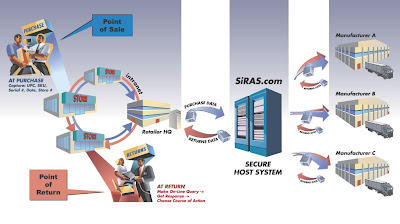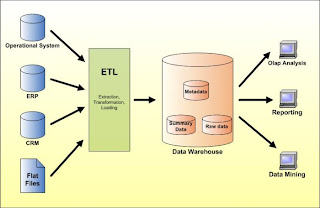- Customer File, where data about Nintendo’s customers are collected. These data are used to customize service for Nintendo's customers. Customer file collects data such as customer number, name, phone or address.
- Employee File, where data about Nintendo’s employees such as ID and name are stored.
- Order File, is used to track customer order, contains order number, order date, customer number or delivery address.
- Sales File, collects data about sales quantity, price, date and invoice number.
- Product File, is used to distinguish software and hardware. It contains product number, product UPC and product description.
Nintendo use relational database. Relation database stores information in a series of two-dimensional tables (files) in logical structure. All files are related providing easy access and are easily extendable. Nintendo uses these files of related information to effectively process orders and manage customer relationship.
Unfortunately we weren’t able to find out what brand of database software Nintendo uses, but we believe that Nintendo would not support its competitor Microsoft and its SQL Server. It than let us believe, that Nintendo uses Oracle relational database management system, widely regarded as one of the most popular full-featured database system on the market today. Other database providers on the market are IBM DB2, Sybase, and Informix.
SIRAS
A specific example of databes Nintendo uses is Product Sales Information Database. This database is operated by SIRAS, the first point-of-sale serial number registration program, which is a subsidiary of Nintendo of America. SIRAS Informational Sales Database records where and when a product was purchased and whether it is still under a manufacturer’s warranty or a store’s extended warranty.

SIRAS employs the combination of a product’s UPC number and serial number to establish a product’s unique fingerprint. Nintendo uses Electronic Registration to gain control of escalating returns costs, reclaim lost revenues, and streamline the returns process.
Database Administrator
Database Administrator (DBA) is responsible for the database and its environmental aspects such as: designing database, creating and testing back-ups, verifying integrity, implementing access controls to the data, ensuring database maximum performance and helping programmers and engineers to efficiently utilize the database.
Manager's Reports 
Manager reports contain data that has been collected over a certain period of time. These summarized data can be accompanied with charts and graphs to support manager’s decision making. Managers get reports from relation database management system through report generators. Report generators help quickly define formats of reports and what information is desirable. Examples of types of reports are: Sales Report, Order Report, Customer Report, Revenue Report, Employee Performance Report etc. Oracle DBMS features built-in and customizable reports to address the need for reliable reporting. Oracle includes pre-built reports, and captures before-and-after changes to sensitive data to help organization save time and costs related to reporting.
OLAP, Data Mining, Data Warehouse, Data Marts

Nintendo uses OLAP (Online Analytical Processing), which provide Nintendo with easy and fast access to large volume of summarized information to support decision making. It allows Nintendo to work and analyze such data and simply provides answers to Nintendo’s employees.
- Nintendo is a company with a strong consumer focus. It is important for Nintendo to use data mining in order to determine relationship among “internal” factors such as price, product positioning and external factors such as economic indicators, competition and customer demographics. Data mining enables Nintendo to determine the impact on sales, customer satisfaction and corporate profits and allows Nintendo to provide more customer oriented service. Nintendo as a global, multinational company uses data mining also to communicate with its suppliers, retailers and distributors.
- Through Data-mining tools (such as query reporting tools, intelligent agents, statistical tools etc.) Nintendo’s data are transformed from many different operational databases to data warehouse, a logical collection of information, where it is sorted into small data marts. In data marts only a focused portion of data warehouse information is kept such as Nintendo’s sales, distribution or production.
- Unfortunately, we weren’t able to find which business intelligence software Nintendo uses, but among the most used ones are: Business Objects, Actuate or Cognos.







No comments:
Post a Comment